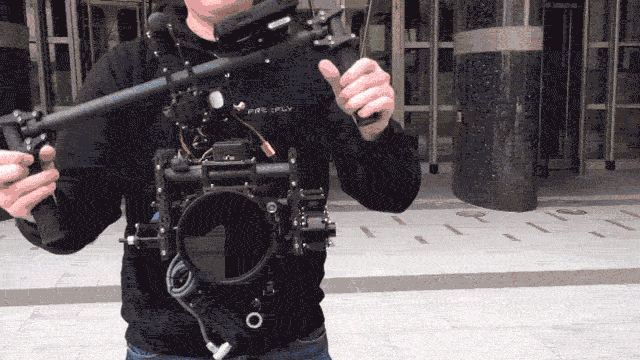I've been following this since it came out on Vincent Laforet's blog. He claims 'game changer'. I claim BS.
It's not really new tech. The tech in this has been around for a long time, so it's barely even revolutionary.
In the demo video, the framing is pretty awful. And that's their demo video.. A lot of the pan movement is jerky, the framing is average at best, and the focus pulling looks decidedly absent.
The fact that it's remote control of framing means framing will always be playing catch up. With a steadicam, your framing and movement are controlled by one person, who can compensate on either, and is able to look around and predict to keep framing correct and movement smooth. Not so with the Movi.
The other, much more important aspect is that a steadicam puts the weight of the camera on your shoulders. This means you can pull off a 12-hour day operating all day, and whilst you'll feel it, you'll still be able to operate.
The Movi is touted as being lightweight - which it is. Even with a stripped down Epic or similar it comes in at around 10lb or ~5kg... Except all the weight is in your forearms. After 3-8 rehearsals and 4-10 takes of one relatively long shot, your forearms will be dead. Good luck pulling off more than one shot, let alone a whole 12 hour day on this thing. If you want to give it a try, try holding a 10lb or 5kg sack of potatoes out in front of you for an hour and see how long you last.
Plus you need three operators (rig, framing, focus), at least one of whom is working on a remote monitor. So, whilst you've got a relatively inexpensive rig - you then need to shell out for wireless monitor Tx plus a wireless focus system w/ motor and receiver.
I'd also like to see this thing on longer lenses - it's relatively jerky pan movement on wider lenses so I'm interested as to how it fares on long lenses.
Look, it is cool and does provide some extra options, but it's hardly a game changer. If you design shots specifically for it, that's where I see some awesome things happening. You could've pulled off the taxi shot better on a steadicam, but pulling into the taxi, then passing the camera through the other side is something that would be awesome, and would leave the audience going 'how the f@#! did they actually do that?!'
What would be really awesome is to see this thing combined with an Easyrig.
All of that said, one of the local rental houses has ordered one. I've got a few shoots coming up this year, so if they get it in time and it's not ridiculously over-priced to rent, I'll certainly be giving it a go.





 )
)